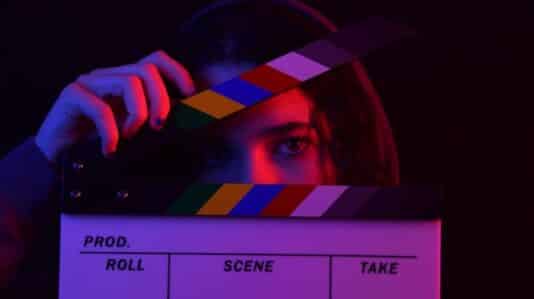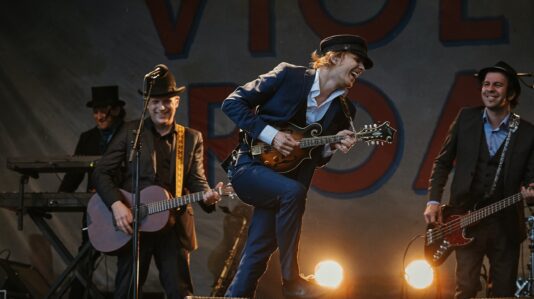Updated: April 16, 2021
If you’re a singer or songwriter, chances are you’ve been affected by other artists’ work. In the past few years, a number of musicians have filed lawsuits against other performers for copyright infringement, claiming that their songs have been copied. But so many artists are inspired by the rhythms, lyrics, and compositions of other songs. So where do you draw the line between inspiration and infringement?
Blurred Lines
For artists like Pharrell Williams and Robin Thicke, that line is easily blurred. In 2015, the Gaye’s family successfully claimed the pair’s 2013 smash, “Blurred Lines,” infringed on Gaye’s 1977 hit “Got to Give It Up.” As a result, the two artists were ordered to pay $7.3 million to the estate of Marvin Gaye. The jury relied heavily on the Gaye Estate’s expert witness. The expert witness stated that “Blurred Lines” used a substantially similar signature phrase, hook, hook with backup vocals, core theme, backup hook, bass melody, keyboard part and percussion choice. Importantly, none of these elements were identical, but they simply created a similar “groove or feeling.” Williams and Thicke appealed the Court’s decision and filed a brief, with the support of over 200 musicians, claiming that a “groove or feeling cannot be copyrighted, and inspiration is not copying.” While the damages were reduced to $5.3 million, the 9th Circuit Court of Appeals upheld the lower court’s decision. Think about that – $5 million for copying a “groove or feeling,” not for copying a tangible musical element such as melody, chord progression, rhythm or lyrics.
Stairway to Heaven
The “Blurred Lines” decision struck fear throughout the music industry. Artists were forced to question each step of their creative process, including who and what they pulled inspiration from. In the wake of the decision, the 9th Circuit ruled on the long-standing battle between Led Zeppelin and the band Spirit, over “Stairway to Heaven” allegedly infringing Spirit’s “Taurus.” Despite concerns that the 9th Circuit might reinforce the earlier California court ruling, it actually found in favor of Led Zeppelin, holding that “Stairway to Heaven” did not infringe on “Taurus.” This was a huge victory for artists, as it essentially held that when dealing with the basic building blocks of music where there is a narrow range of available creative choices, the songs must be “virtually identical” to find infringement.
Dark Horse
Another major victory came in March 2020. The District Court for the Central District of California overruled the jury as a matter of law in the copyright dispute between Katy Perry’s “Dark Horse” and Flame’s “Joyful Noise.”[1] Flame alleged that Perry infringed on his song because both works contained a descending minor-key progression with evenly-space B and C notes. While not mentioned in the lawsuit, an interesting note is that similar descending minor-key progressions can also be found in Bach’s “Violin Sonata in F minor”, the holiday classic “Jolly Old Saint Nicholas” and Akira Ifukube’s 1954 theme song to Godzilla. Citing the “Stairway to Heaven” ruling, the Court stated that the similarities are basic and fundamental building blocks of music. Thus, the similarities are not subject to copyright protection in the first place. Specifically, the Court held that the descending minor-key progression in “Joyful Noise” was not “numerous enough” and not “arranged” in a sufficiently original manner to warrant copyright protection.
Where are We Now?
So, where does that leave us now? Well, that is still up in the air. It will likely take more litigation proceedings to determine what specific musical elements can be protected by copyright laws. Of course, directly copying lyrics, melodies, harmonies and chord progressions is a big non-no, as was reaffirmed in the recent lawsuit between Tracy Chapman and Nicki Minaj.
Chapman sued Minaj for copyright infringement because Minaj’s song, “Sorry,” used both the lyrics and melody from Chapman’s 1988 song, “Baby Can I Hold You.” While the case never went to trial, Minaj ultimately paid Chapman $450,000 to put the lawsuit behind them. The key takeaway in infringement cases is that, although the basic building blocks of music are unprotectable under copyright law, the selection and arrangement of those unprotectable elements can be copyright protected.
Many artists and industry professionals have argued that the “Blurred Lines” decision was incorrect, claiming that the two songs are set in different keys, have no similar lyrics, and that no one would likely confuse the two melodies. Unlike in the “Stairway to Heaven” and “Dark Horse” cases, the Court ruling on “Blurred Lines” never addressed the question of protectability as a matter of law because Thicke and Williams failed to make a Rule 50(a) motion of judgment as a matter of law at trial. Regardless, artists and musicians should still be mindful of the distinction between inspiration and outright copying.
Conclusion
There’s no clear-cut way to guarantee successfully preventing an infringement case against you, but consider these few things to protect yourself and your work:
- Registering any unpublished work you have with the U.S. Copyright Office.
- Register for Errors & Omissions (E&O) insurance – this can protect you from challenges to your intellectual property and insurance providers may cover up to several million dollars of your costs if you lose a copyright infringement lawsuit.
- If you plan to sample music – the act of taking a portion of a sound recording and reusing it as an instrument or a sound recording in your own song – you must contact the artist or their estate to get clearance to use the snippets beforehand.
- Many aspiring singers and songwriters cover popular songs by other musicians to gain initial traction – if you choose to do a cover, get a mechanical license from the song’s copyright owner before posting your audio on any platform.
- Keep in mind that if the artist whose work you’re sampling is signed to a major record label, the label will most likely own the rights to the recordings. In which case, contact the label directly.
- Also, don’t forget that you need permission from the songwriters too!
It may seem like a lot but taking these precautionary measures will help avoid potential infringement claims and problems in the future. Don’t let legal troubles get in the way of creating your next big hit!
[1] Gray v. Perry, No. 2:15-CV-05642-CAS-JCx, 2020 WL 1275221 (C.D. Cal. Mar. 20, 2020).





